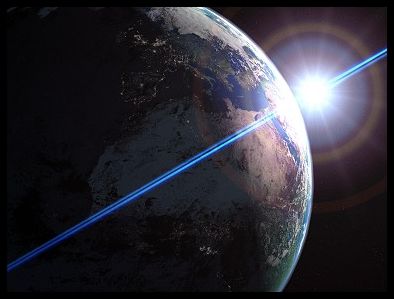
Life in the Universe
Prof. Scott Gaudi

|
Astronomy 141 Life in the Universe Prof. Scott Gaudi |
Key Ideas
We have a reasonably accurate timeline of the history of:
There were several important events for biology:
Age of the Universe
Age of the Universe
Looking back in time
History of the Universe
Origin of the Elements
Immediately after the Big Bang
The elements formed during Big Bang Nucleosynthesis are:
All elements heavier than Beryllium were formed well after the big bang.
Overview of the Formation of the Solar System
--The solar systems was formed from a disk of gas and dust orbiting
around the protosun.
Implications of this formation model:
Age of the Solar System
Radiometric Ages
Age of the Solar System
Age of the Earth
Age of the Moon
The Moon was thought to have formed from a large impact from a Mars-sized
body, which removed a large part of the outer shell of the Earth. This
material then recollected to form the Moon.
History of the Earth
Signs of Life
Sterilizing Impacts
Early Earth History
One Important Conclusion, and One Very Interesting Possibility
Timeline of the Universe
See A Note about Graphics to learn
why the graphics shown in the lectures are generally not reproduced with
these notes.
[
Return to the Astronomy 141 Main Page
|
Unit 2 Page
]
Universe cooled quickly as it expanded.
After about 10-6 seconds, protons and neutrons formed.
After three minutes, protons and neutrons became to form
simple elements. -> "Big Band Nucleosynthesis"
No heavier elements were formed.
No Carbon, Oxygen, and other elements of life.
The elements of life were produced in Stellar Nucleosynthesis: these
elements were created by sunlike stars at the ends of their life.
We are stardust!
As a consequence, life cannot arise before the second generation
of stars, several million years after the big bang.
--Dust grains in this disk settle to the midplane of the disk, where
they combine to form planetesimals: the building blocks of planets.
--These planetesimals attract each other via gravity to form planets.
--The final configuration is a coplanar system of planets all orbiting the sun
in the same direction.
--Planet construction is messy: the leftover building blocks of planets
remain in the solar system and occasionally impact the planets: these are asteroids,
meteoroids, etc.
This Moon formation mechanism implies the Earth is older than the Moon.
At least 100 Myr older:
The age of moon rocks from radiometric dating is about 4.4 Gyr, so the Earth must
be at least 100 Myr older than this, or older than 4.5 Gyr.